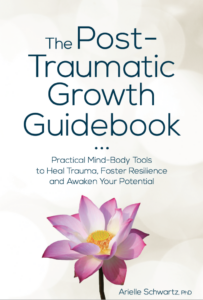This post addresses the role of boundaries as instrumental to healing trauma, especially childhood trauma. Boundaries are the limits that help to define the self. They create the distinction, “this is me and that is you.” Boundaries are meant to be adaptive and responsive to our environment. For example, when you feel safe, your boundaries can be more flexible allowing for greater emotional or physical intimacy with another person. However, when you feel threatened or are unsafe your boundaries become more defined and can help you protect yourself by saying “no, this doesn’t feel good.”
“Without a boundary, you will be more likely to give in to others. With too rigid of a boundary, you risk feeling isolated. Having clear boundaries helps you adapt the level of emotional or physical intimacy in the moment. Healthy boundaries help with decision making and allow you to take responsibility for your actions and thoughts. Maintaining successful boundaries involves accepting the fact that you cannot please others all of the time. They help you ask for what you need, even though you may be told no or risk feeling rejected. Ultimately, healthy boundaries facilitate self-respect and a sense of your own worth.”
-Dr. Arielle Schwartz
Boundaries are first learned in the earliest of relationships; by how parents or caregivers related to us as infants and children. All infants have natural, inborn rhythms for connection and disconnection. Ideally, a parent or caregiver attunes to the cues of the infant or child—meaning that the parent is responsive to the infant’s cues for connection and honors the infant’s natural need for space. No parent is perfect and it is normal to misread or misunderstand a child’s cues. In fact, ruptures are a normal part of parenting and in small doses can actually strengthen a child’s resilience and capacity to tolerate stress. This process necessitates a commitment on the caregiver’s part to repair the injury until safety and reconnection are re-established.
Dr. Ed Tronick, parent-infant mental health specialist, explored the cues expressed by infants to signal their needs for contact and space. For example, infants will coo or smile to express a desire for engagement and will avert their gaze or turn their head to the side to signal a need to disconnect. He also looked at the behaviors of depressed mothers. Tronick observed that these mothers were less likely to be attuned to a child’s cues for connection or disconnection and were more likely to violate boundaries.
According to Jack Rosenberg and Majorie Rand, somatic psychologists and founders of Integrative Body Psychotherapy (IBP), boundary violations in early childhood have three common patterns: invasion, abandonment, and a combination of the two.
Boundaries are meant to be flexible enough to allow for intimate connections with others. Ultimately, healthy boundaries require that you tolerate both closeness and separateness. Somatic psychology actively engages boundary explorations that helps you to increase awareness of the cues in your body that hep you recognize the quality of your boundary. Here are 5 practices that you can practice at home to develop healthy boundaries:

Within The Post Traumatic Growth Guidebook, you will find an invitation to see yourself as the hero or heroine of your own life journey. A hero’s journey involves walking into the darkness on a quest for wholeness. This interactive format calls for journaling and self-reflection, with practices that guide you beyond the pain of your past and help you discover a sense of meaning and purpose in your life. Successful navigation of a hero’s journey provides opportunities to discover that you are more powerful than you had previously realized. Click here to order the book on Amazon.

In The Complex PTSD Workbook, you’ll learn all about Complex PTSD Recovery and gain valuable insight into the types of symptoms associated with unresolved childhood trauma, while applying a strength-based perspective to integrate positive beliefs and behaviors. This is a great add-on with the Post Traumatic Growth Guidebook…Click here to order.

For therapists, The EMDR Therapy and Somatic Psychology book, teaches you how to integrate two of the best known trauma recovery modalities into your practice. Click to order it here and increase your toolbox for healing using this integrative and effective approach to healing.
Dr. Arielle Schwartz is a licensed clinical psychologist, wife, and mother in Boulder, CO. She offers trainings for therapists, maintains a private practice, and has passions for the outdoors, yoga, and writing. She is the developer of Resilience-Informed Therapy which applies research on trauma recovery to form a strength-based, trauma treatment model that includes Eye Movement Desensitization and Reprocessing (EMDR), somatic (body-centered) psychology and time-tested relational psychotherapy. Like Dr. Arielle Schwartz on Facebook,follow her on Linkedin and sign up for email updates to stay up to date with all her posts. Dr. Schwartz is the author of three books:

Arielle Schwartz, PhD, is a psychologist, internationally sought-out teacher, yoga instructor, and leading voice in the healing of PTSD and complex trauma. She is the author of five books, including The Complex PTSD Workbook, EMDR Therapy and Somatic Psychology, and The Post Traumatic Growth Guidebook.
Dr. Schwartz is an accomplished teacher who guides therapists in the application of EMDR, somatic psychology, parts work therapy, and mindfulness-based interventions for the treatment of trauma and complex PTSD. She guides you through a personal journey of healing in her Sounds True audio program, Trauma Recovery.
She has a depth of understanding, passion, kindness, compassion, joy, and a succinct way of speaking about very complex topics. She is the founder of the Center for Resilience Informed Therapy in Boulder, Colorado where she maintains a private practice providing psychotherapy, supervision, and consultation. Dr. Schwartz believes that that the journey of trauma recovery is an awakening of the spiritual heart.